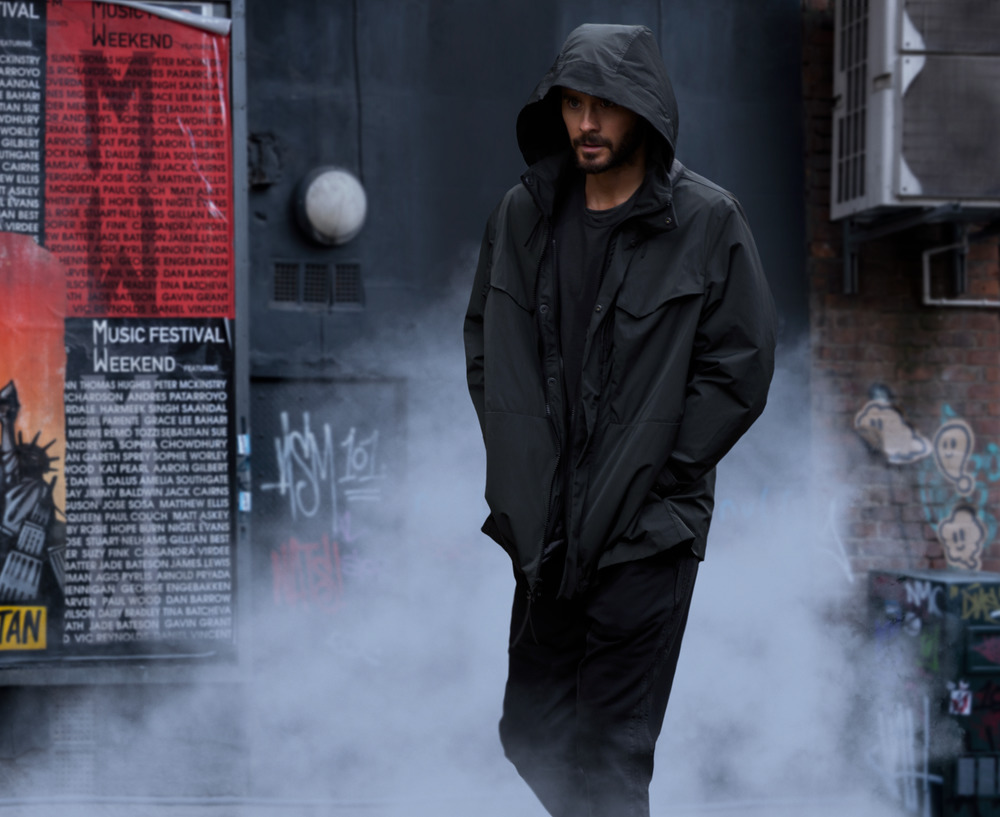Movie Review: Morbius

Way back in 2002, when the Marvel Cinematic Universe was just a gleam in X-Men producer Kevin Feige’s eye, a spec script by screenwriter Bragi F. Schut called The Last Voyage of the Demeter was picked up for a pre-Flightplan Robert Schwentke to direct. Described as an adaptation of the “Captain’s Log” chapter of Bram Stoker’s Dracula, it chronicled the ill-fated ocean voyage that brought the Transylvanian count to England’s shores. The project cycled through several other filmmakers, including Marcus Nispel (Pathfinder), Stefan Ruzowitsky (The Counterfeiters), David Slade (30 Days of Night), and Neil Marshall (The Descent), before entering what is charmingly referred to as “Development Hell.”
Not long afterwards, Universal Studios attempted to launch a shared cinematic universe featuring their famous lineup of Universal Monsters, beginning with a Tom Cruise-starring action/adventure film (2017’s The Mummy) that aimed to launch a new “Dark Universe” brand. They also decided to half-heartedly incorporate 2014’s Dracula Untold at some point in the proceedings, I’m not sure of the actual timeline of events, to be honest. The whole thing culminated in a photo shoot featuring Javier Bardem (Frankenstein’s monster!), Angelina Jolie (Bride of Frankenstein!) and Johnny Depp (the Invisible Man!), that – although the lattermost of those castings proved somewhat prescient – has become shorthand for the kind of failed “cinematic universe” experiments subsequently attempted by every other studio in the wake of Marvel’s success.
Maybe I’m getting ahead of things a bit here, but: enter Morbius. This vehicle for a member of Spider-Man’s rogue’s gallery of villains likely began gestating at some point between the release of Marc Webb’s Amazing Spider-Man films (during which a Drew Goddard-helmed Sinister Six film was also bandied about), and the box office juggernaut that was 2018’s Venom. Jared Leto signed on to star, and the optimist in me hoped maybe he’d bring a Tom Hardy-esque commitment to the character that resulted in something with some actual personality.
And, as I sat down to watch Morbius, I was still cautiously optimistic. The film had been delayed several times, due to both the COVID-19 pandemic and the gargantuan success of Spider-Man: No Way Home, while the trailer became one of those that simply continued to run in theaters (it even ran before our press screening, touting an obsolete January release date). But I went in knowing next to nothing about the character and hoping for the best. I liked director Daniel Espinosa’s previous film, Life, which demonstrated his facility for merging VFX and practical effects while also highlighting his endearing affinity for the ghoulish.

The film starts fairly strong, introducing Leto’s Dr. Michael Morbius as well as his chief foil throughout the film, Matt Smith’s “Milo.” The opening scene – utilized in every single trailer for the film – is brief, but effectively so. The flow of the editing early on gives the indication that things may have been moved around a bit, but by someone who’s very good at doing so (in this case, editor Pietro Scalia, who also received an Associate Producer credit for his troubles). The centerpiece of the opening stretch, which is also presented in every trailer, is a small-scale realization of the premise of that aforementioned Last Voyage of the Demeter screenplay that’s arguably the highlight of the entire film. I thought the excuse for getting him onto a ship in the first place was maybe a little bit flimsy – he purportedly has to be out there due to the illegality of this particular experiment – but I appreciate how far out of their way screenwriters Matt Sazama & Burk Sharpless were willing to go to execute a nod to their bloodsucking forbears. The ship is even named the Murnau for good measure (although Leto curiously pronounces it Murn-AWW, instead of Murn-OHH).
There’s also a moment where Adria Arjona’s character (Dr. Martine Bancroft) is knocked unconscious, and it actually has a lasting impact on her, similar to the way it would in real life. It’s still somewhat of a narrative convenience, the way it’s usually employed, but – once again – I appreciated the care and discipline that went into that decision. Not long afterwards, there’s a phenomenally suspenseful sequence set in a hospital hallway whose fluorescent lights are activated by motion sensors. It’s genuinely shocking and exceptionally well executed, and it’s the final moment where the film really feels like it’s firing on all cylinders.
After those sequences, the film struggles to find its footing. Scenes seem to be somewhat out of their intended order from the outset, but the somewhat jumbled nature of the proceedings only exacerbates as the film continues. Tyrese Gibson and Al Madrigal are given virtually nothing to do as the detectives in pursuit of Leto’s creature of the night. In fact, a golden opportunity to do something with them evaporates almost immediately, when an early chase sequence is abruptly cut short with some of the most bafflingly-executed effects work I think I’ve ever seen. It seems like it’s intended to illustrate Leto’s character discovering the ability to “fly,” although I don’t think it’s technically supposed to be flight, and the fact that none of this is clear only speaks to what falters throughout the rest of the film.
I’m not sure what’s out there already about the film’s main villain, and I don’t want to spoil it for anyone who’d rather go in cold, but the second half of the film ultimately devolves into a paint-by-numbers superhero movie climax that’s almost entirely visually incoherent. CGI is pushed into overdrive during the film’s home stretch, and it turns into the kind of assault on the senses we’d all been led to believe superhero films had evolved beyond. In fact, part of me even wondered if this was made in an attempt to break up the active stranglehold superhero cinema has on the theatrical landscape through sheer force of making an audience endure all of that genre’s worst elements, cranked up to infinity.

After the success of Spider-Man: No Way Home, it would appear that a second end credits tag was appended to the end of this film as well. For the record, there are TWO end credits tags, but I suspect the first one was already there (although I could be wrong about that). Only one of the featured actors in the scene seems to have been present at the time it was shot, and it’s honestly not worth considering as part of the film itself. Much like Tom Hardy’s Venom, Leto’s Morbius has no business interacting with the current Marvel Cinematic Universe, tonally or qualitatively, and the insistence upon as much is one of those things that’s such a transparently awful idea it feels like active self-sabotage. So, with Morbius, we have a film so cluttered with post-production chicanery that it should by rights torpedo any further attempts from Sony to launch their own personal Spider-verse of superhero films.
Much like Universal’s “Dark Universe,” this whole enterprise is conceptually misbegotten and creatively overcooked to the point of incoherence. In this way, Morbius feels like it’s hopelessly behind the times. And even the best stuff here – specifically the Demeter-esque sequence aboard the Murnau – is destined to be overshadowed by one or all of a handful of upcoming productions that will likely also explore it in some detail, each of which will only benefit from not being hopelessly yoked to the box office and narrative expectations of modern superhero films.
Chloe Zhao (Nomadland) recently signed on to helm a sci-fi western for Universal based in part on Dracula. Chris McKay (The Tomorrow War) is currently in production on Renfield, in which Nicolas Cage portrays Dracula (this strikes me as the most promising of the bunch). Karyn Kusama (The Invitation) is slated to direct a Blumhouse-produced take on Dracula in the vein of 2020’s The Invisible Man (mounted after the failure of the aforementioned Dark Universe). And, finally, Andre Ørvedal (The Autopsy of Jane Doe) is bringing The Last Voyage of the Demeter to the screen at least two full decades after the script (now credited to Schut, Ruzowitsky, and Zak Olkewicz) first began circulating in earnest.
Anyone going to see Morbius looking for something in the vein of Marvel’s recent Spider-Man films will be disappointed, and anyone looking for something that successfully exploits the more horrific elements of its premise would almost certainly be better off waiting for these other films.


